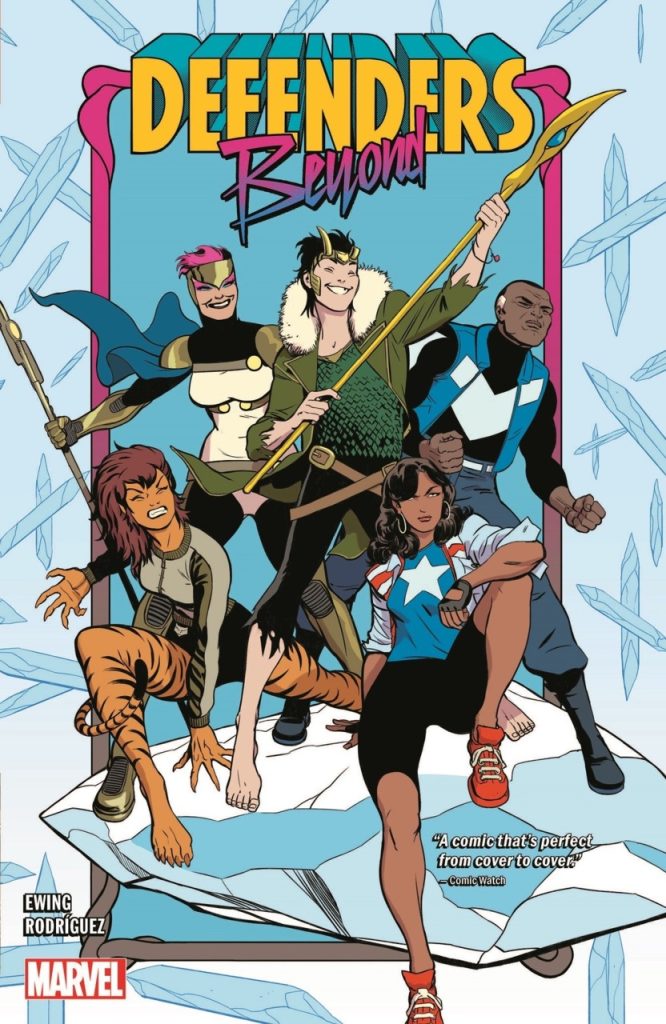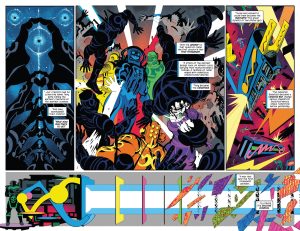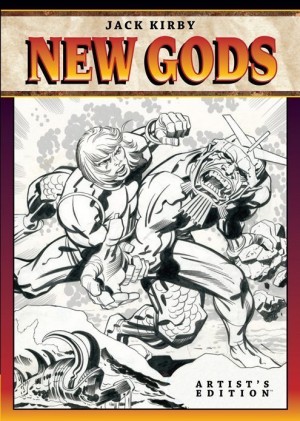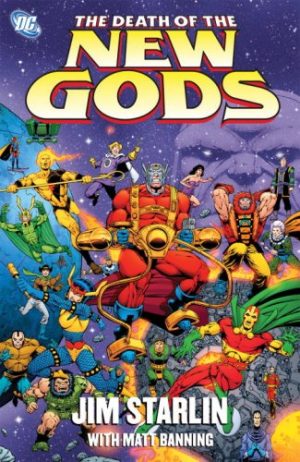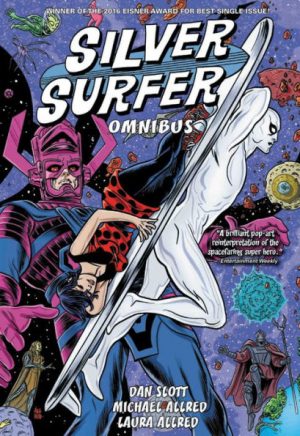Review by Karl Verhoven
Since Al Ewing last wrote Defenders Marvel rather inconveniently killed Doctor Strange, a questionable decision given a new Doctor Strange film was about to be released. Of course, he’ll be back at some stage, probably as the surprise revelation in the final chapter of a company crossover, but for Beyond the man who largely summoned and then held together most incarnations of the Defenders wasn’t available to Ewing. Still, both Strange and Ewing have left some loose ends needing rectified, and among them are the assorted artefacts Strange acquired in There Are No Rules, bequeathed to Adam Brashear, the Blue Marvel.
He’s one of several characters Ewing’s dealt with in the past, including Loki, here in female form, and Taaia introduced in There Are No Rules. America Chavez and Tigra complete the Defenders part of the cast, but as to who they’re up against this time, that’s rather a killer surprise. However, the title gives a clue, and “Imagine a baby learning only from TV commercials for action figures” is Ewing’s astute assessment of their past.
Even more so than before, Ewing channels Jack Kirby, conceptual inspiration, and a belief in the fundamental ability of the human spirit to overcome as he rationalises the cosmic, which is no easy task, and one some readers may find too strung out for comprehension. The template as previously used proves adaptable as the location and narrator switches with every chapter.
It’s not just Ewing back for a second pop at the Defenders, or plain Defenders as they are here, as Javier Rodríguez returns to astound on the art. The sample spread shows his great Celestials, given an even greater Kirby makeover on the following page, and as before he has to work with several very different environments. The morass of tubes representing the flow of reality, for instance. The colouring Rodríguez uses to differentiate the assorted locations is even more impressive and page after page stuns. It’s a bravura performance so off the scale that Beyond would be worth the price even without Ewing’s intelligent script.
For all the weighty matters at stake, with the likes of Taaia’s deliberately poor 1960s dialogue, Beyond is actually very funny at times, the absurd having a place in the conceptual stew, especially as visual metaphor. Other influences are surprising. Is that really a twisted version of an Enid Blyton idea in the fourth chapter? Yes, it is! And there’s also a comment or two about DC’s continuity amid a mind-boggling love letter to the potential of comics. By the final chapter it’s also very much an alternative to Grant Morrison end to Animal Man all those years ago.
If you found There Are No Rules disjointed and confusing you’ll probably not enjoy Beyond much either, but tune in and you’ll be greatly rewarded.
